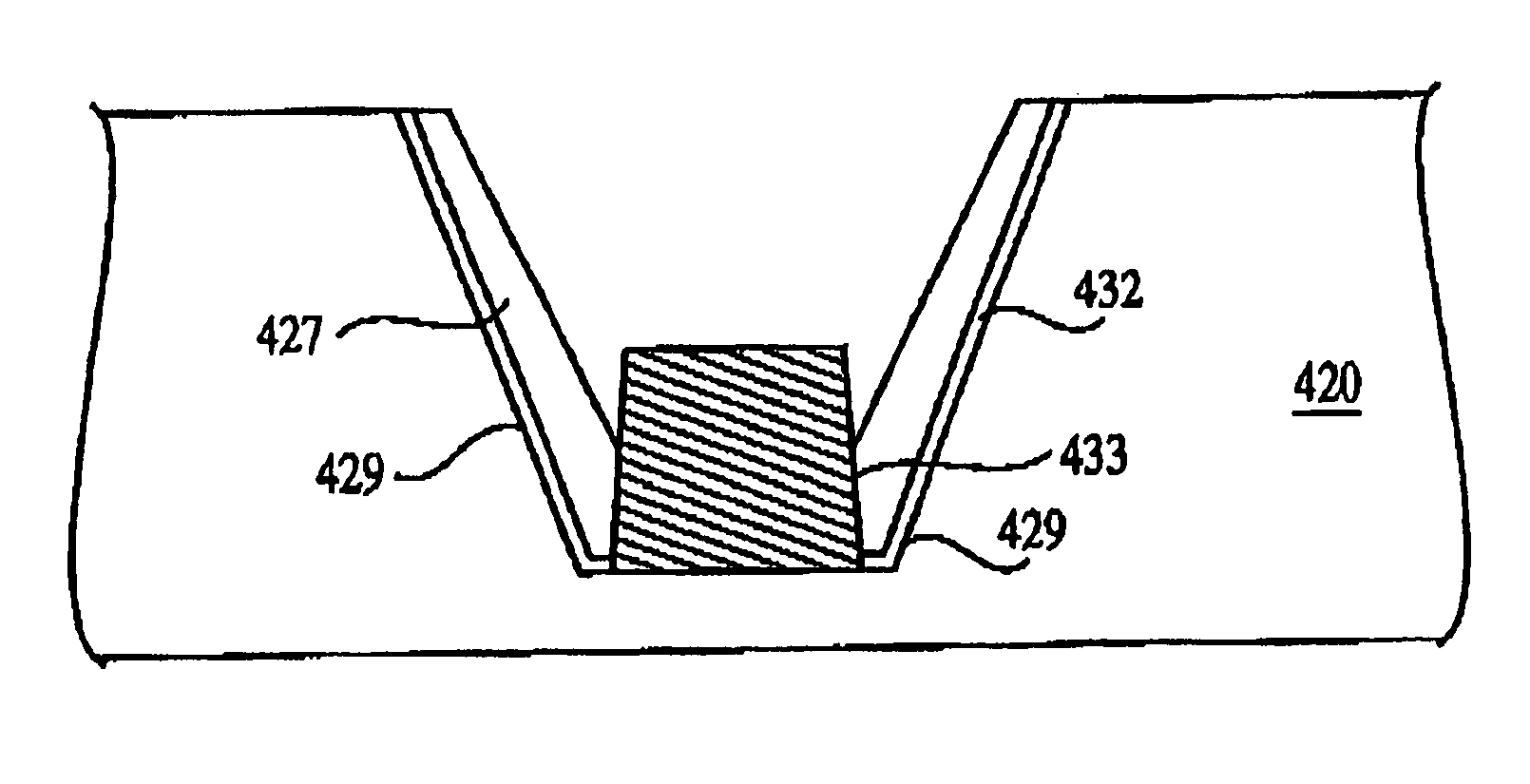Isolation techniques for reducing dark current in CMOS image sensors
a technology of image sensor and isolation technology, which is applied in the direction of semiconductor devices, radio frequency controlled devices, electrical equipment, etc., can solve the problems of affecting and reducing the detection accuracy of cmos image sensors
- Summary
- Abstract
- Description
- Claims
- Application Information
AI Technical Summary
Benefits of technology
Problems solved by technology
Method used
Image
Examples
first embodiment
[0041] A first embodiment according to the invention is now described with reference to FIGS. 2-6. Applicant proposes an STI process, which uses an isolation trench filled with a doped conductive material containing silicon. Shallow trench isolation regions for CMOS image sensors generally have a depth of less than about 3000 Angstroms and generally around about 2000 to about 2500 Angstroms. Typically, shallow trench regions are filled with a conventional insulator, such as oxides or high density plasma (HDP) oxides. However, it is difficult to fill trenches having a depth greater than 2500 Angstroms with conventional insulators due to the limited spacing within the trench, for example, undesirable voids or air gaps are formed when oxides are used to fill trenches having a depth greater than about 2500 Angstroms. In accordance with the invention, Applicant proposes filling trenches with conductive materials containing silicon, preferably polysilicon or silicon-germanium. Conductive ...
second embodiment
[0051] A second embodiment in accordance with the invention is now described with reference to FIGS. 7-13. Referring now to FIG. 7, a trench 428 is etched into an active layer 420. The trench is preferably a deep trench having a depth greater than about 2500 Angstroms and preferably between about 4000 to about 5000 Angstroms. A resist and mask are applied, and photolithographic techniques are used to define the area to be etched-out. A directional etching process, such as RIE, or etching with a preferential anisotropic etchant is used to etch into the doped active layer 420 to form the trench 428. The resist and mask are removed leaving the FIG. 7 structure.
[0052] Referring now to FIG. 8, a nitride liner 432 is formed in the trench 428 via Chemical Vapor Deposition (CVD). This nitride liner 432 may be formed of any suitable nitride including NO, ON, ONO, and is preferably formed of silicon nitride.
[0053] Referring now to FIG. 9, an oxide, e.g. SiO2 or other dielectric liner 427 is ...
PUM
 Login to View More
Login to View More Abstract
Description
Claims
Application Information
 Login to View More
Login to View More - R&D
- Intellectual Property
- Life Sciences
- Materials
- Tech Scout
- Unparalleled Data Quality
- Higher Quality Content
- 60% Fewer Hallucinations
Browse by: Latest US Patents, China's latest patents, Technical Efficacy Thesaurus, Application Domain, Technology Topic, Popular Technical Reports.
© 2025 PatSnap. All rights reserved.Legal|Privacy policy|Modern Slavery Act Transparency Statement|Sitemap|About US| Contact US: help@patsnap.com



